Amalie Robert Estate Climate Update: May 2020
Hello and Welcome,
This is an Amalie Robert Estate Climate Update: May 2020. A FLOG communication from Dena and Ernie. Amalie Robert Willamette Valley Pinot Noir.
May was a Dr. Seuss type month. First it was hot and then it was not. There was no rain and then it rained a lot. In farming you get what you get and that’s what we got!

April was the month where Ernie focused on preparing the vineyard floor for vintage 2020. The vines noticed the tilled soil and welcomed the newly germinated cover crop. Freshly cycled nutrients and frequent showers made an abundance of nutrients available to our vines. And now they are on a tear!
Our vines have just explosive growth early in the season. Our job is to capture that growth, in an orderly fashion, with three sets of trellis wires. At the end of the growing season, we want good separation of the clusters of wine berries to minimize the chance for mildew or bunch rot to take hold. And here is how we do it - by hand.
The first activity to clean off all of the excess new growth early in the season. “Nip it in the bud” is the colloquial phrase. This means to remove excess or poorly positioned shoots before they can tap into the vines limited spring resources. We are looking for about 15 growing points on any given vine. The vines are survivors and they will start the year off with maybe 30 growing points, including the shin kickers at 3 inches off the ground. Our goal is to focus the vine’s energy in those 15 growing points that will bear the best quality wine berries. Their next stop is the winery where we will ferment the sugar out of them!

This brief video will give you an idea of how we do shoot thinning, taking us from 30 down to about 15 shoots. You can check out several other exciting videos (viticulturally speaking) on our YouTube channel.
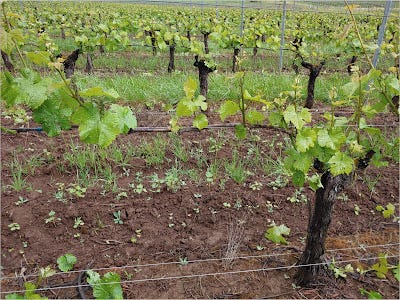
Click to watch the Shoot Thinning video at Amalie Robert Estate
The freshly germinated cover crop also has a role to play this month, Buckwheat in particular. This little plant has superpowers. The first of which is that it will flower about 3 weeks after it germinates. This is quick in the plant kingdom. The flowers provide pollen for our army of beneficial insects. Beneficial insects are the insects that eat the nasty-bad insects that like to feed on our vines. Ladybugs and earwigs are good. Cane borers and some mites are bad, but they taste good, apparently. Buckwheat flowers provide protein, in the form of pollen, for our army of beneficial insects when they can’t find any nasty-bad insects to vanquish.

The alternative is what is known as a completely “clean cultivated” vineyard floor. That means each row is barren earth. No life-giving pollen or places for your beneficial insects to hunt down those nasty-bad insects. The reasoning behind clean cultivation, such that it is, is that there will be more water available to the vine roots. Maybe, but this is Oregon and it does rain here spring and fall. Speaking of which, has anyone tried a 2007 vintage Pinot Noir lately? Just sublime…
Either way, we like the little ecosystem we have created for our “first responders”. And the cover crop and grass help maintain a healthy soil high in humus – good for the worms. It also informs the vine that if it really wants water, it needs to send those roots deep. And that is the ultimate advantage of old vines, deep, deep roots. Assuming you chose the right rootstock to begin with.
Ok, let’s change our view to 38 inches above the vineyard floor. That is where the canopy management action was happening in May. Our first of three sets of trellis wires are positioned at 8 inches above our 30 inches fruiting wire. Ultimately, the vines will top out at 90 inches above the vineyard floor. That gives us a 60 inch tall canopy – or active solar array as Ernie thinks of it. Our job is to get those 15 shoots contained within those wires and clipped into place.

You are all accustomed to the climate numbers Ernie has been tracking since we established the vineyard at Amalie Robert Estate, but he has a whole other set of workbooks that track oh so much more. There are 49 blocks planted on the property, 42 of them are numbered and 7 of them have their own alpha-numeric nomenclature. Odd for computer science people we know, but it is better than using binary or hexadecimal ordering – which we could do.
Ernie has been tracking vineyard activities for quite some time. In the case of this first set of wires, it took 568.53 hours to raise wires and tuck in all (mostly) of the vine’s shoots. That comes in at about 39.864 seconds per vine times 51,343 fruiting vines. That’s good news because it is a full 3 seconds faster than the trailing 4 year average! It took Einstein a while, but he finally came around to the “time is money” axiom, just after he finished the theory of relativity.
Ernie still hasn’t finished his book “Negotiated Reality – My Turn in the Barrel”. But thanks to the inherently unique nature of the wine business, he has an abundance of source material to pull from.
Now we thought it would be interesting to present some vine association graphics. This is what your wine looks like in the vineyard right about now, and what it is going to look like in a year or so.
First up is Chardonnay.
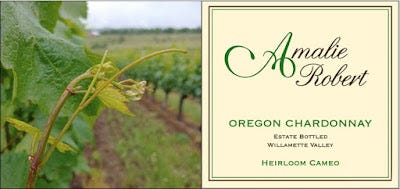
Then Pinot Meunier.
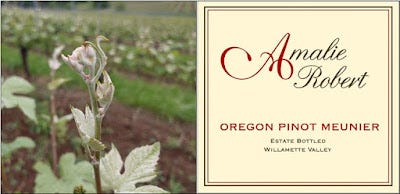
To complete the Champagne Deconstructed theme, we have Pinot Noir.

Here is our Syrah.
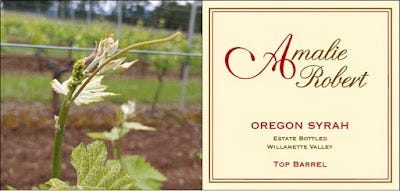
And our Viognier.
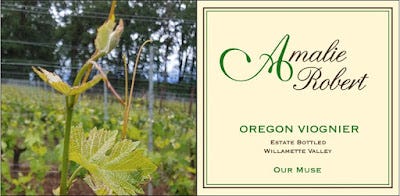
Lastly, a cluster of what will become wine berries. Bonus points available if you can accurately identify the variety.
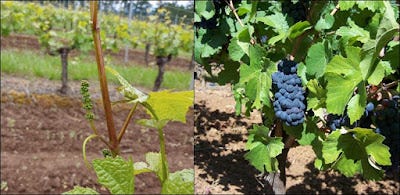
After all those pictures, we get to some numbers. The month of May contributed 257.4 Degree Days to vintage 2020, bringing us to a grand total to date of 390.9 degree days.
The high temperature for the 30 day period was 88.9 degrees and the low temperature was 37.4 degrees. The first half of the month was cooler registering 111.6 Degree Days, however the second half of the month recorded the low temperature.
The second half of the month registered 145.8 Degree Days and recorded the high temperature. Rainfall was 3.76 inches for the month providing a growing season to date total of 5.09 inches and is significantly more than the 1.33 inches recorded in April. Maybe that explains why Ernie is spending so much time mowing the grass.
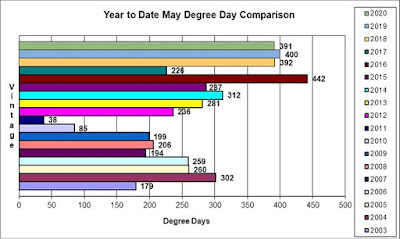
Next up in June we will have countless flowers in the vineyard and the second set of trellis wires up. A little farther down the road, The Great Cluster Pluck will visit itself upon us in about 120 days. But until then, these little blighters are starting to make themselves known and will be doing their best to keep us entertained. Despite what you may have heard, these are considered nasty-bad insects.
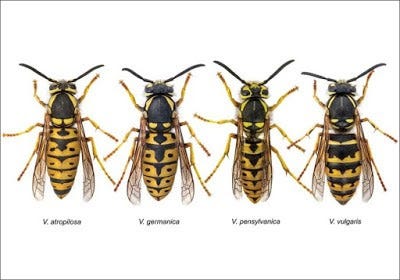
iPinot COVID-19 Pivot Pricing is now in effect at $120 on six bottles with domestic ground shipping included. Just click on the Big Blue Button to browse available vintages or collect them all!

Note: You will not need a promo code to activate pricing. The pricing will automatically adjust when you select six bottles of iPinot and there is no further discount on iPinot. The shipping will be adjusted upon confirmation of your order. This is our contribution to the human condition, yours and ours. If you have any questions or need assistance, please E-mail Dena at Cuvee@amalierobert.com.
Kindest Regards,
Dena & Ernie



